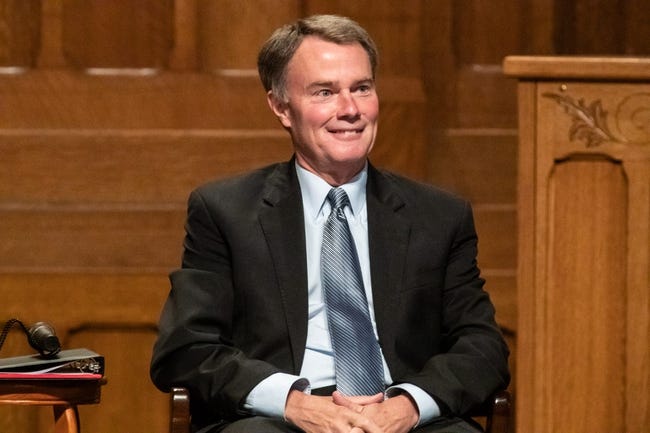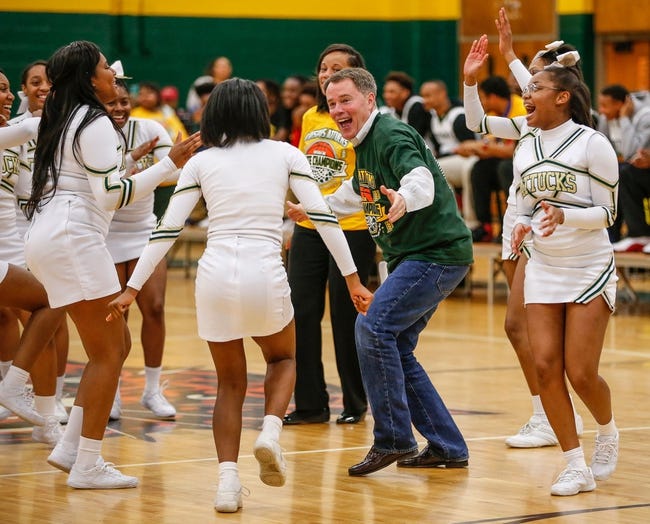First elected in 2015, Democrat Joseph H. Hogsett went on to win reelection as with 71 percent of the vote in 2019. With a commitment to extending the city’s economic strength and downtown vibrancy throughout its neighborhoods, he assembled a historically diverse leadership team that aimed to reduce poverty and improve public safety. In his pursuit of fiscal stability, his first administration fixed a chronic budget deficit without raising taxes.

Hogsett grew up in Rushville, Indiana. He graduated from Indiana University with a Bachelor of Arts degree, a Master of Divinity degree from the Christian Theological Seminary, and a Juris Doctor from Indiana University Mauer School of Law. He served as Indiana secretary of state from 1989 to 1994 and chief of staff to Governor Evan Bayh. He was later appointed U.S. attorney for the Indiana Southern District by President Barack Obama, serving in this position from 2010 to 2014. Hogsett’s aggressive approach to combat crime included initiatives he brought to Indianapolis as mayor.
The first and second Hogsett administrations pursued a goal of community-based law enforcement. To address public safety and the root causes of crime, Hogsett formed the Office of Public Health and Safety. The office developed alternatives to arrest, including a mental health assessment tool for police in the field, behavioral health response teams, and an Assessment and Intervention Center to engage people with recovery services. A task force of leaders in the criminal justice system recommended a new community justice complex to replace the existing overcrowded jail. A new justice complex opened in 2021.

The administration set a goal to help Indianapolis youth and adults with post-secondary school opportunities through last dollar grants (monies students draw upon after public funding dollars are awarded) and directed incentives to help them secure better jobs. Annual summer job opportunities for youth grew from 1,000 to over 3,000 during the first Hogsett administration.
The administration’s efforts to address other public health issues succeeded in large part due to a strong coalition that provided residents with access to housing, food, public health resources, and new skills. Neighborhoods added streetlights and repaired housing. City partnerships rehabilitated industries and community buildings, added , and built research complexes.
The first Hogsett administration faced fiscal challenges resulting from the two prior administrations’ privatization of parking meters and water and sewer operations. The loss of these assets profoundly reduced city revenues. Hogsett’s first budget reduced total spending yet allowed for the addition of police officers. Successive budgets were balanced, with two receiving unanimous approval from a bipartisan .
Crumbling city streets plagued the first administration, as it had previous mayoral administrations. State road funding is distributed based on road miles and not road use, resulting in inadequate maintenance budgets for busy roads. Severe freeze-thaw cycles further deteriorated Indianapolis streets and thoroughfares. The administration gained support for increased allocation of funds for thoroughfare improvements, but COVID-19 directed attention of the 2020 General Assembly away from road funding.

The second Hogsett Administration has faced daunting challenges defined by four concurrent crises: the global COVID-19 pandemic, the economic crisis caused by the pandemic, a national reckoning on racial justice, and a striking increase in gun violence, with a rise in murders each year. The epidemic of violence was not unique to Indianapolis–cities across the U.S. reported similar increases–but it became a significant political problem for Hogsett.
In February 2021, he announced the Circle City Forward Initiative, which involved a $190 million investment to improve public facilities, including parks, construction of public safety facilities, and an upgrade of animal care services. To address the need for thoroughfare improvements, Indianapolis directed city resources to fund Circle City Forward parts 2 and 3, totaling $50 million of investment in residential streets, trails, and greenways. All phases of the initiative were designed “to jumpstart the economy and to drive public investment into neighborhoods.” The city also undertook extraordinary efforts to prevent evictions, restore employment, deliver food and rental assistance, increase skill for future work, and achieve racial equity in all city efforts.

Help improve this entry
Contribute information, offer corrections, suggest images.
You can also recommend new entries related to this topic.

